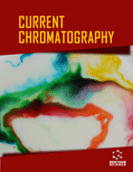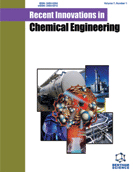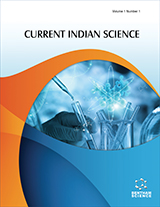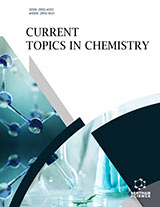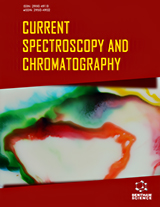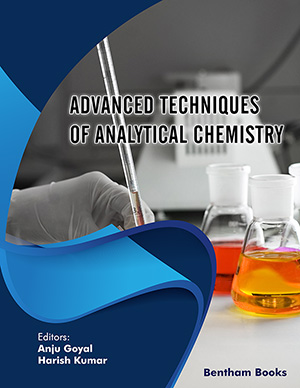Abstract
Background: A variety of pharmacological effects have been attributed to ursolic acid, however, its hydrophobicity has made clinical application difficult. In this sense, the development of nanoparticles containing ursolic acid may represent an improvement in drug solubility.
Objective: In this study, a simple HPLC method with PDA detection was developed and validated for the quantitative determination of ursolic acid in poly(lactic acid) (PLA) nanoparticles.
Method: The method was validated as per ICH guidelines considering the parameters linearity, limits of detection and quantification, specificity, accuracy, precision and robustness. The mobile phase employed was a mixture of acetonitrile and water (90:10, v/v) under isocratic elution with a flow rate of 1 mL/min. Ursolic acid was detected at 203 nm.
Results: The method proved to be linear in the range of 10 – 100 µg/mL and the limits of detection and quantitation were 0.50 and 1.53 µg/mL, respectively. Precision (intra-day and inter-day) presented relative standard deviation below 2%. Accuracy was assessed by the recovery test of ursolic acid from nanoparticles. Robustness was demonstrated altering the mobile phase and flow rate. Specificity showed no interference from components of formulation or degradation products from light exposure.
Conclusion: The method was successfully employed to determine the content of ursolic acid in PLA nanoparticles.
Keywords: Ursolic acid, HPLC, nanoparticles, poly(lactic acid).
Current Chromatography
Title:A Validated HPLC-PDA Method for the Analysis of Ursolic Acid Content in Poly(lactic acid) Nanoparticles
Volume: 3
Author(s): Emilli Antonio, Osmar dos R. A. Junior, Najeh M. Khalil and Rubiana M. Mainardes
Affiliation:
Keywords: Ursolic acid, HPLC, nanoparticles, poly(lactic acid).
Abstract: Background: A variety of pharmacological effects have been attributed to ursolic acid, however, its hydrophobicity has made clinical application difficult. In this sense, the development of nanoparticles containing ursolic acid may represent an improvement in drug solubility.
Objective: In this study, a simple HPLC method with PDA detection was developed and validated for the quantitative determination of ursolic acid in poly(lactic acid) (PLA) nanoparticles.
Method: The method was validated as per ICH guidelines considering the parameters linearity, limits of detection and quantification, specificity, accuracy, precision and robustness. The mobile phase employed was a mixture of acetonitrile and water (90:10, v/v) under isocratic elution with a flow rate of 1 mL/min. Ursolic acid was detected at 203 nm.
Results: The method proved to be linear in the range of 10 – 100 µg/mL and the limits of detection and quantitation were 0.50 and 1.53 µg/mL, respectively. Precision (intra-day and inter-day) presented relative standard deviation below 2%. Accuracy was assessed by the recovery test of ursolic acid from nanoparticles. Robustness was demonstrated altering the mobile phase and flow rate. Specificity showed no interference from components of formulation or degradation products from light exposure.
Conclusion: The method was successfully employed to determine the content of ursolic acid in PLA nanoparticles.
Export Options
About this article
Cite this article as:
Antonio Emilli, dos R. A. Junior Osmar, M. Khalil Najeh and M. Mainardes Rubiana, A Validated HPLC-PDA Method for the Analysis of Ursolic Acid Content in Poly(lactic acid) Nanoparticles, Current Chromatography 2016; 3 (2) . https://dx.doi.org/10.2174/2213240603666160726161253
| DOI https://dx.doi.org/10.2174/2213240603666160726161253 |
Print ISSN 2213-2406 |
| Publisher Name Bentham Science Publisher |
Online ISSN 2213-2414 |
 55
55 2
2Related Articles
-
Bioanalytical and Biophysical Techniques for the Elucidation of the Mode of Action of Metal-Based Drugs
Current Topics in Medicinal Chemistry Effects of Salinomycin on Cancer Stem Cell in Human Lung Adenocarcinoma A549 Cells
Medicinal Chemistry Non-Viral Gene Delivery to the Lungs
Current Gene Therapy Cinnamic Acid Derivatives as Anticancer Agents-A Review
Current Medicinal Chemistry Trans-Platinum Complexes with Promising Antitumor Properties
Medicinal Chemistry Reviews - Online (Discontinued) 5-Lipoxygenase and Cyclooxygenase Inhibitory Dammarane Triterpenoid 1 from Borassus flabellifer Seed Coat Inhibits Tumor Necrosis Factor-α Secretion in LPSInduced THP-1 Human Monocytes and Induces Apoptosis in MIA PaCa-2 Pancreatic Cancer Cells
Anti-Cancer Agents in Medicinal Chemistry Latest Insights into the Anticancer Activity of Gold(III)-Dithiocarbamato Complexes
Anti-Cancer Agents in Medicinal Chemistry Polymorphism in Endothelin-1 Gene: An Overview
Current Clinical Pharmacology Resveratrol and Prostate Cancer: The Power of Phytochemicals
Current Medicinal Chemistry Emerging Strategies and Challenges for Controlled Delivery of Taxanes: A Comprehensive Review
Current Drug Metabolism Clinical Development of Inhibitors of the Insulin-like Growth Factor Receptor in Oncology
Current Drug Targets The Human Glioma-Associated Oncogene Homolog 1 (GLI1) Family of Transcription Factors in Gene Regulation and Diseases
Current Genomics Palliative Tumor Control by Trabectedin in Pediatric Advanced Sarcoma
Current Drug Therapy Potential Usage of ING Family Members in Cancer Diagnostics and Molecular Therapy
Current Drug Targets Clinical Pharmacology of Serotonin Receptor Type 3 (5-HT3) Antagonists
Current Medicinal Chemistry - Central Nervous System Agents Non-histone Methylation of SET7/9 and its Biological Functions
Recent Patents on Anti-Cancer Drug Discovery Targeting the Eph System with Peptides and Peptide Conjugates
Current Drug Targets Importance of Influx and Efflux Systems and Xenobiotic Metabolizing Enzymes in Intratumoral Disposition of Anticancer Agents
Current Cancer Drug Targets Targeting Karyotypic Complexity and Chromosomal Instability of Cancer Cells
Current Drug Targets Oxidative Stress, Redox Signaling and Cancer Chemoresistance: Putting Together the Pieces of the Puzzle
Current Medicinal Chemistry


